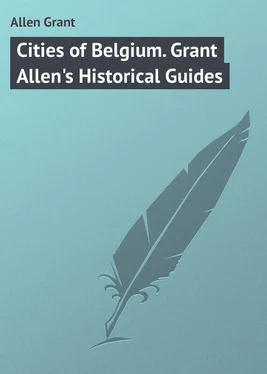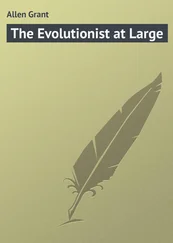Grant Allen - Cities of Belgium. Grant Allen's Historical Guides
Здесь есть возможность читать онлайн «Grant Allen - Cities of Belgium. Grant Allen's Historical Guides» — ознакомительный отрывок электронной книги совершенно бесплатно, а после прочтения отрывка купить полную версию. В некоторых случаях можно слушать аудио, скачать через торрент в формате fb2 и присутствует краткое содержание. ISBN: , Издательство: Иностранный паблик, Жанр: foreign_language, foreign_prose, на английском языке. Описание произведения, (предисловие) а так же отзывы посетителей доступны на портале библиотеки ЛибКат.
- Название:Cities of Belgium. Grant Allen's Historical Guides
- Автор:
- Издательство:Иностранный паблик
- Жанр:
- Год:неизвестен
- ISBN:http://www.gutenberg.org/ebooks/49690
- Рейтинг книги:3 / 5. Голосов: 1
-
Избранное:Добавить в избранное
- Отзывы:
-
Ваша оценка:
- 60
- 1
- 2
- 3
- 4
- 5
Cities of Belgium. Grant Allen's Historical Guides: краткое содержание, описание и аннотация
Предлагаем к чтению аннотацию, описание, краткое содержание или предисловие (зависит от того, что написал сам автор книги «Cities of Belgium. Grant Allen's Historical Guides»). Если вы не нашли необходимую информацию о книге — напишите в комментариях, мы постараемся отыскать её.
Cities of Belgium. Grant Allen's Historical Guides — читать онлайн ознакомительный отрывок
Ниже представлен текст книги, разбитый по страницам. Система сохранения места последней прочитанной страницы, позволяет с удобством читать онлайн бесплатно книгу «Cities of Belgium. Grant Allen's Historical Guides», без необходимости каждый раз заново искать на чём Вы остановились. Поставьте закладку, и сможете в любой момент перейти на страницу, на которой закончили чтение.
Интервал:
Закладка:
The Cathedral contains few works of art of high merit, but a preliminary walk round the Aisles, Transept, and Ambulatory behind the Choir will give a good idea of its general arrangement. Then return to view the paintings. The sacristan takes you round and unlocks the pictures. Do not let him hurry you.
Begin with the Left Aisle.
The Baptistery, on your L., contains a handsome font. R. and L. of the entry to it are admirable brasses. In the Baptistery itself, L. wall , are two wings of a rather quaint triptych, representing St. Martin dividing his cloak with the beggar; St. Nicholas raising to life the three boys who had been salted for meat; St. Mary Magdalen with the pot of ointment (in the distance, as Penitent in the Desert); and St. Barbara with her tower; dated 1613. Also a rude Flemish picture (16th century) of the lives of St. Joachim and St. Anna, and their daughter the Blessed Virgin: – the main episodes are the Marriage of the Virgin, Birth of the Virgin, and Rejection of St. Joachim from the Temple, with other scenes in the background.
The end wall of the Baptistery has Peter Pourbus’s masterpiece, a *triptych painted for the Guild of the Holy Sacrament, attached to the church of St. Sauveur, and allusive to their functions. The outer wings , when closed, represent the Miracle of the Mass of St. Gregory, when the Host, as he consecrated it, was changed into the bodily Presence of the Saviour, to silence a doubter. It thus shows in a visible form the tremendous mystery of Transubstantiation, in honour of which the Guild was founded. Behind, the Brothers of the Confraternity are represented (on the right wing) in attendance on the Pope, as spectators of the miracle. One of them holds his triple crown. These may rank among the finest portraits by the elder Pourbus. They show the last stage in the evolution of native Flemish art before it was revolutionized by Rubens. The inner picture represents, in the centre, the Last Supper, or rather, the Institution of the Eucharist, to commemorate which fact the Guild was founded. The arrangement of the figures is in the old conventional order, round three sides of a table, with Judas in the foreground to the left. The wings contain Old Testament subjects of typical import, as foreshadowing the Eucharist. Left , Melchisedec giving bread and wine to Abraham; right , Elijah fed by the angel in the Wilderness. All the faces have still much of the old Flemish portrait character.
On the R. wall are the wings of a picture, by F. Pourbus (the son), painted for the Guild of Shoemakers, whose chapel is adjacent. The inside contains portraits of the members. On the outside are their patrons, St. Crispinus and St. Crispianus, with their shoemakers’ knives. Also, an early Crucifixion, of the school of Cologne (about 1400), with St. Catherine holding her wheel and trampling on the tyrant Maximin, by whose orders she was executed, and St. Barbara with her tower. (These two also occur together in Memling’s great triptych.) The picture is interesting as the only specimen in Bruges of the precursors of Van Eyck on the lower Rhine. The Baptistery contains, besides, a fine old candlestick, and a quaint ciborium (for the Holy Oil) with coloured reliefs of the Seven Joys of Mary (1536).
The vistas from the North Transeptare impressive. It terminates in the Chapel of the Shoemakers’ Guild, with a fine carved wooden door of about 1470, and good brasses, as well as an early crucifix. It is dedicated to the patron saints of the craft, and bears their arms, a boot.
The first two chapels in the Ambulatory(behind the Choir) have good screens.
The third Chapelencloses the tomb of Archbishop Carondelet, in alabaster, (1544,) a fine work of the Italian Renaissance. The Descent from the Cross by Claeissens, with the Crown of Thorns and the Holy Blood in the foreground: on the wings, St. Philip, and the donor, under the protection of (the canonized) Charlemagne. Near this is a *triptychby Dierick Bouts, (falsely ascribed to Memling) representing, in the centre , St. Hippolytus torn to pieces by four horses. (He was the jailor of St. Lawrence, who converted him: see Mrs. Jameson). The faces show well the remarkable power of this bourgeois painter of Louvain. On the left wing are the donors; on the right wing Hippolytus confesses himself a Christian, and is condemned to martyrdom. Over the altar, retable , a Tree of Jesse, in carved woodwork, with the family of Our Lady: on the wings, (painted,) the legend of St. Hubert and the stag, and the legend of St. Lucy.
In the Apseis the Chapel of the Host.
The next chapel, of the Seven Sorrows, has a Mater Dolorosa of 1460 (copy of one at Rome); a fine *brass ; and the *portrait of Philippe le Beau, known as Philippus Stok (father of Charles V), and bearing the collar of the Golden Fleece.
The Choir, (admirable architecturally,) contains the *stalls and arms of the Knights of the Golden Fleece, with good carved Misereres.
The Cathedral contains many other pictures of interest, which, however, do not fall within the scope of these Guides.
The Chambre des Marguilliers, or Churchwardens’ Vestry, contains manuscripts and church furniture, sufficiently described by the sacristan.
In the Sacristyare still preserved the relics of St. Donatian.
Give the sacristan a franc, and then go round alone again, to inspect the unlocked pictures at your leisure.
On leaving the Cathedral, go round the south side, which affords an excellent view of the chapels built out from the apse. Then take the little Rue du St. Esprit as far as the Church of
which replaces a chapel, built by St. Boniface, the Apostle of Germany, in 744, and enclosed in the town in 909.
Stand opposite it, in the small Place on the N. side, to observe the somewhat shapeless architecture, the handsome brick tower crowned by a tall brick steeple, and the beautiful little *porchor “Paradise,” built out from the main structure in flamboyant Gothic of the 15th century. The portal of this porch has been walled up, and the area is now used as a chapel, approached from the interior. Notice the delicate tracery of the windows, the fine finials and niches, and the charming gable-end.
The picturesque building with turrets to the L. of the church was originally the mansionof the family Van der Gruuthuus, one of the principal mediæval stocks of Bruges. It had a passage communicating with the family gallery in the church of Notre-Dame. The building, recently restored, is now in course of being fitted up for the Town Museum of Antiquities. A Museum of Lace is already installed in it; the entrance is by a doorway over the bridge to the left (50 c. per person).
Enter the church, and walk straight into the Nave, below the great West Window, a spot which affords a good view of the centre of the church, the vaulted double Aisles, and the angular Apse. The Choir is shut off from the body of the church by a very ugly marble Rood-Screen (1722), still bearing its crucifix, and with a figure of Our Lady, patroness of the church, enshrined above its central arch. Rococo statues of the Twelve Apostles, with their well-known symbols (1618), are attached to the pillars. (Note these symbols: they recur in similar situations everywhere.) In spite of hideous disfigurements, the main portion of the interior is still a fine specimen of good middle Gothic architecture, mainly of the 14th century.
Читать дальшеИнтервал:
Закладка:
Похожие книги на «Cities of Belgium. Grant Allen's Historical Guides»
Представляем Вашему вниманию похожие книги на «Cities of Belgium. Grant Allen's Historical Guides» списком для выбора. Мы отобрали схожую по названию и смыслу литературу в надежде предоставить читателям больше вариантов отыскать новые, интересные, ещё непрочитанные произведения.
Обсуждение, отзывы о книге «Cities of Belgium. Grant Allen's Historical Guides» и просто собственные мнения читателей. Оставьте ваши комментарии, напишите, что Вы думаете о произведении, его смысле или главных героях. Укажите что конкретно понравилось, а что нет, и почему Вы так считаете.












